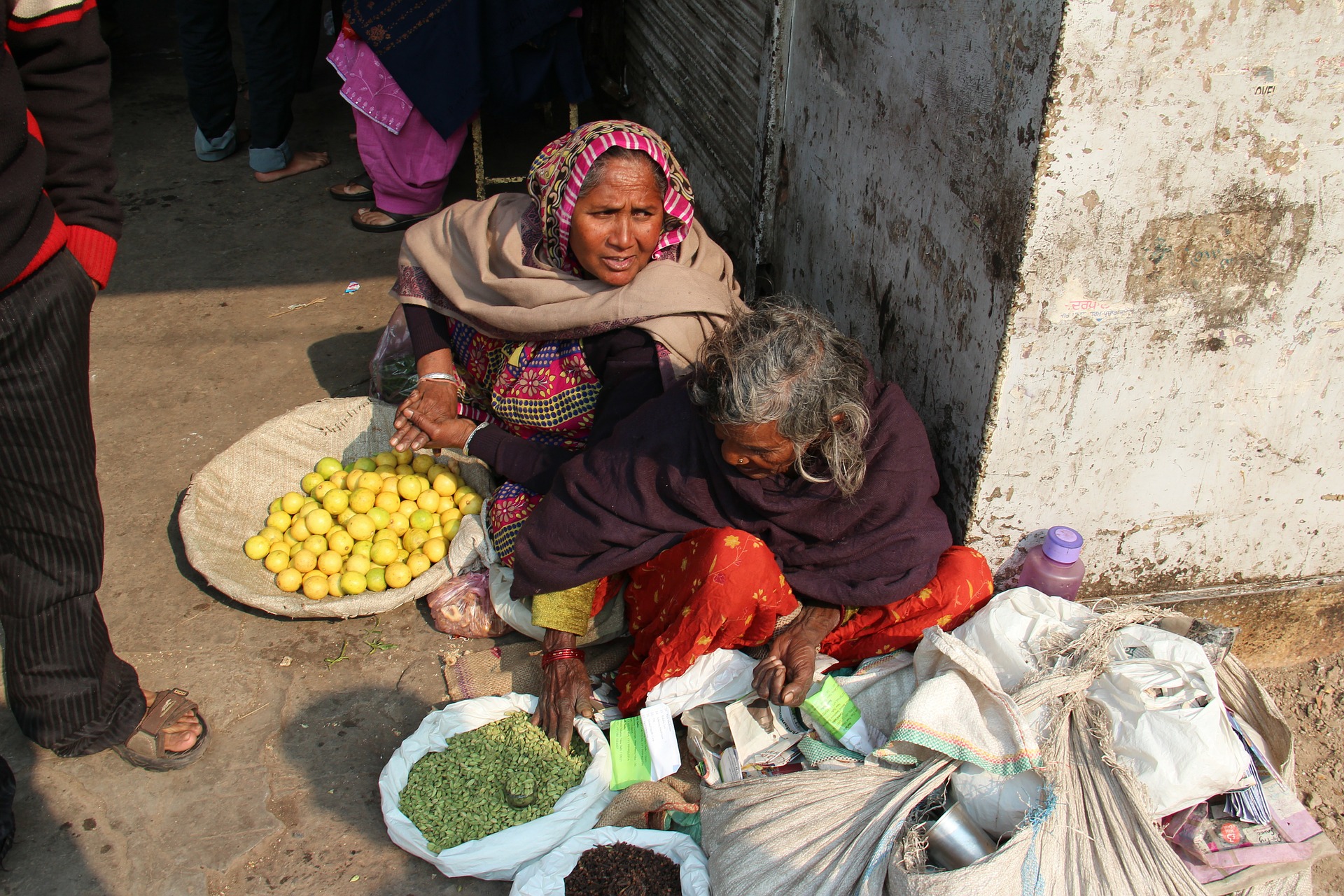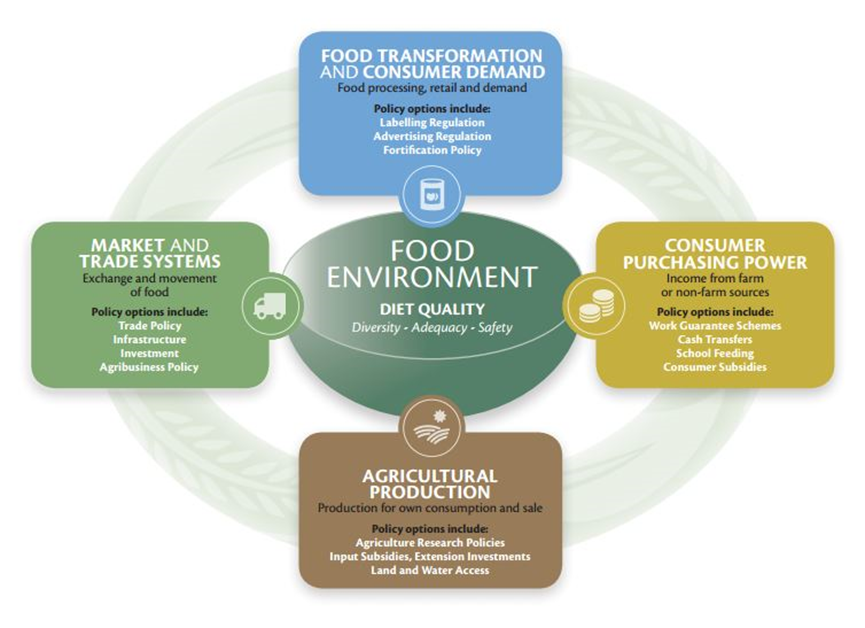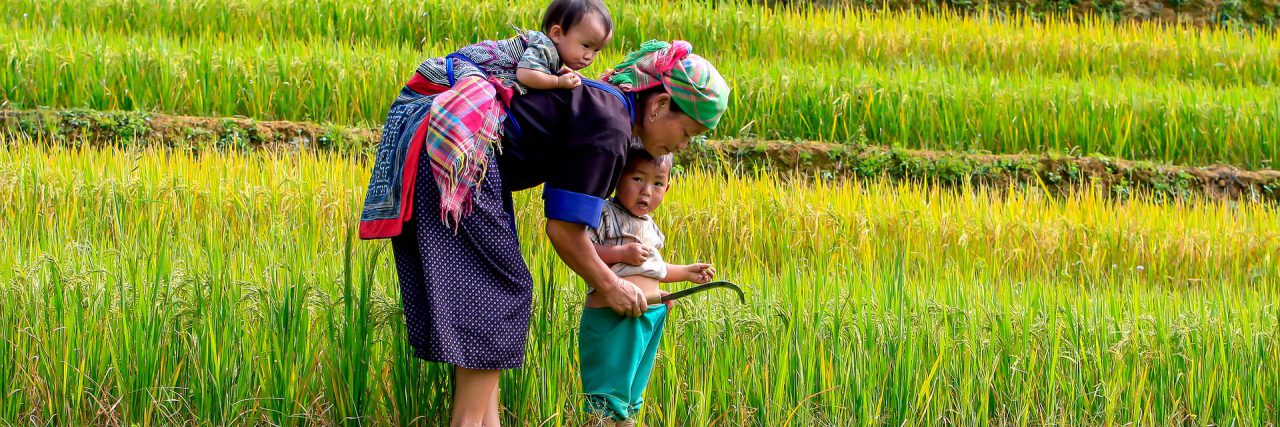
Following the previous blog from Riaz Bhunnoo, Head of Global Food Security, on the opportunity for further research into food security using a ‘food systems’ approach, Professor Alastair Ager, Deputy Chief Scientific Adviser at the Department for International Development (DFID) explains why there is a need for this cross-cutting research and the challenges he hopes this will address.
“I am cultivating zinc rice because it has extra zinc, which actually helps in a child’s development” notes Fazlur Rahman, a farmer from the Sunamganj District, Bangladesh, one of millions of beneficiaries from DFID-funded research in biofortification.
DFID is committed to maximizing the benefits of its research investments for those in low income countries. Accordingly, DFID launched its first ever Research Review (PDF) at the Grand Challenges Conference in London in October 2016. This review set out how the UK will focus £390 million per year up to 2020 on research and innovation to help address the great global challenges of the 21st century. Of specific interest to me is the commitment in the review to invest in large-scale research into sustainable agriculture, to improve nutrition and food security, and increase resilience to climate change in developing countries. More research is needed in this area as to how commercialisation and food systems could be more effective in assisting the world’s poorest people.
Ending hunger and improving nutrition requires a novel approach
Approximately three billion people across the globe now have low-quality diets with more than two billion people having a diet with insufficient micronutrients. Nearly a quarter of all children under five years of age are stunted, and the ‘double burden’ of overweight and obesity is growing in every region. Not only this, but the situation is set to worsen dramatically over the next 20 years as major drivers of change such as population growth, climate change and increasing urbanisation all impact on food systems.
To improve nutrition for all, and to work towards achieving the UN Sustainable Development Goal 2: “End hunger, achieve food security and improved nutrition and promote sustainable agriculture”, we need to acknowledge the central role of food systems. The food environment from which people can establish healthy diets is influenced by a number of areas of activity, such as agricultural production, food processing, transportation, retail environment etc. Analysis of a food system also considers the actors, activities, and outcomes delivered in order to highlight potential approaches and intervention points.

Although DFID funds some research programmes which look at the food environment as a system, such as the CGIAR Programme on Agriculture for Nutrition and Health (A4NH), our understanding about the quality of diets at a global level remains limited. Some organisations have tried to conceptualise food systems into a visual framework such as the Global Panel on Agriculture and Food Systems for Nutrition Framework:

But what are the gaps that further research could help fill?
It is so important that all those invested in nutrition and agriculture, across both the public and private sectors, work together to refocus on the goal of achieving healthy diets that nourish, rather than merely feed, people.

The Global Panel on Agriculture and Food Systems for Nutrition gave a call to action in their 2016 Foresight Report (PDF), highlighting a number of specific priorities for action, which DFID agrees warrant further investigation. A range of interdisciplinary research is exactly what is needed for action on food systems, and so I echo Riaz’s appeal from his previous blog to ask the research community to consider entering a proposal for a hub focussed on food systems to the GCRF Interdisciplinary Research Hubs call.
The UK is respected around the world for the quality and impact of its scientific work. Research and technical expertise is one of the country’s greatest assets. Understanding ways to strengthening sustainable food systems is a major development goal, and a key one for the UK research community – with its global partners – to engage with.
About Alastair Ager
Professor Alastair Ager is Deputy Chief Scientific Adviser with the UK Department for International Development. He holds academic appointments with the Institute for Global Health and Development, Queen Margaret University, Edinburgh and the Mailman School of Public Health, Columbia University, New York.




Whilst improving the micronutrient content of staple crops such as rice is an admirable and desirable goal with immediate impacts, by itself it is not enough. We need diversified diets that include a wider range of ingredients from more crops than only staples. Saying that these are expensive and more complicated than biofortifying staples is the wrong starting point. Health and nutrition is more than better staples
Sayed, thanks so much for engaging on such an important subject. Whilst I agree that diversified diets are the ideal, we know that poverty can drive people to consume a small range of staple crops to satisfy their hunger. These few crops are not providing the essential vitamins and minerals needed for a healthy body; this is where biofortification can be of use. Biofortification of staple crops is an effective option to reach large numbers of the rural poor that may be in isolated or remote areas. It is a cost effective and sustainable way to reach tens of millions of people, and after an initial outlay of funds, the recurrent costs are very small. Long after people stop thinking about biofortification, farmers will continue to grow and eat their biofortified crops.
But you are right to signal that a food systems approach is more than looking at one option, such as biofortification, to feed people. The food environment from which people can establish healthy, nourishing diets that don’t simply just feed hunger, is influenced by a number of areas of activity. To get the diversity in diets that you speak of, one key strategy is to utilise innovative approaches and interdisciplinary working from the research community to develop resilient food systems that will increase the availability and variety of healthy, safe and nutritious food.